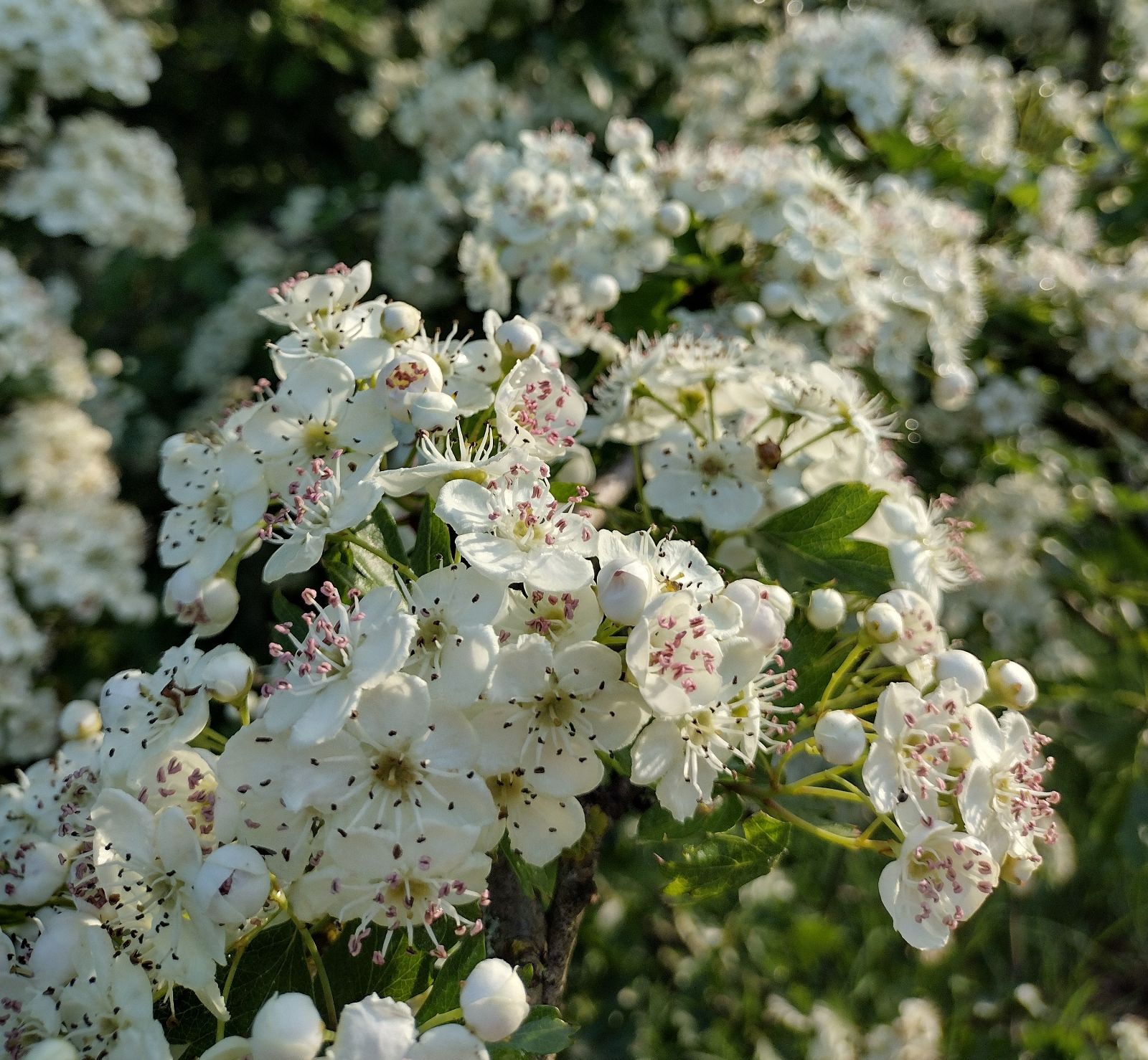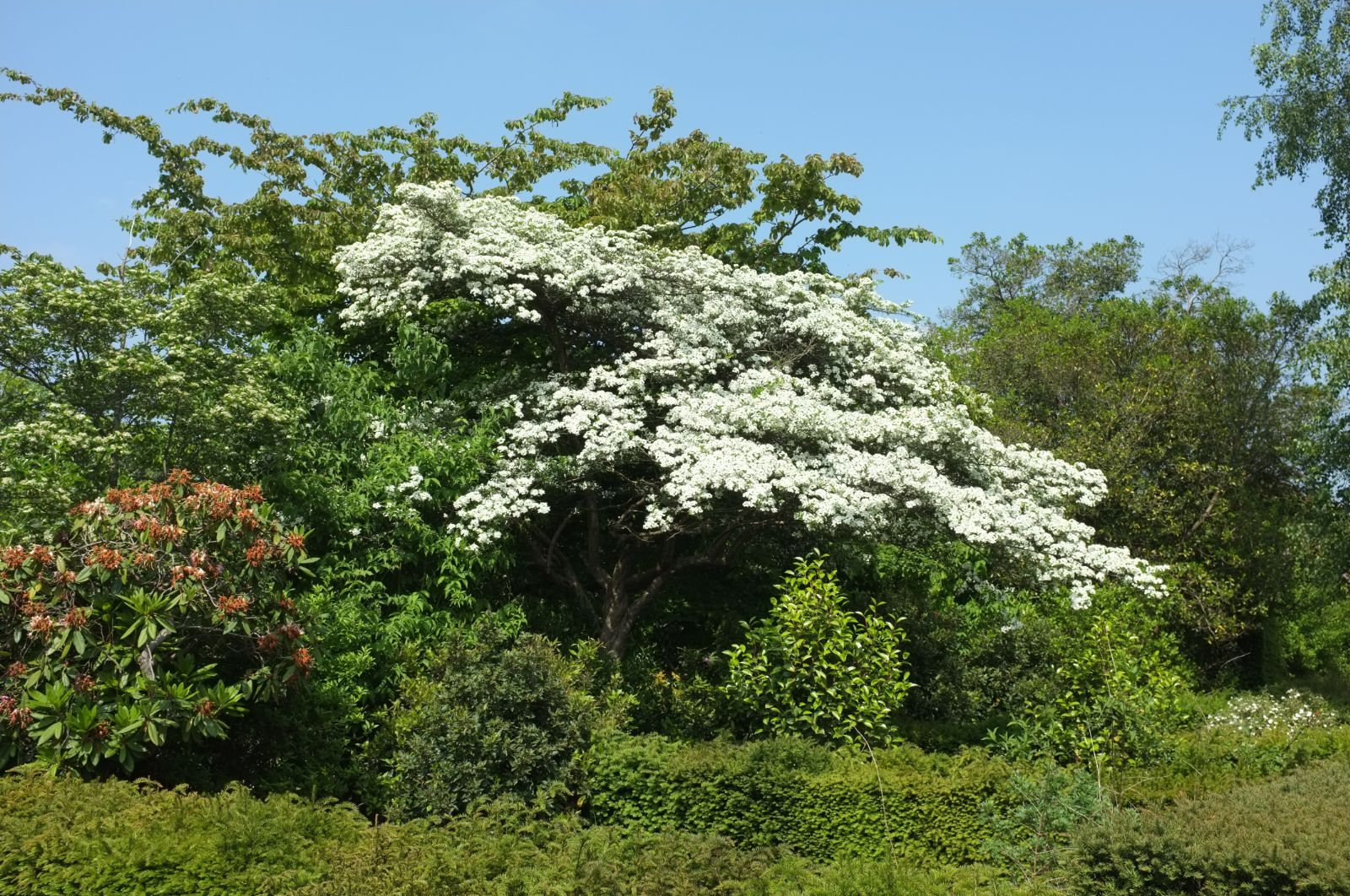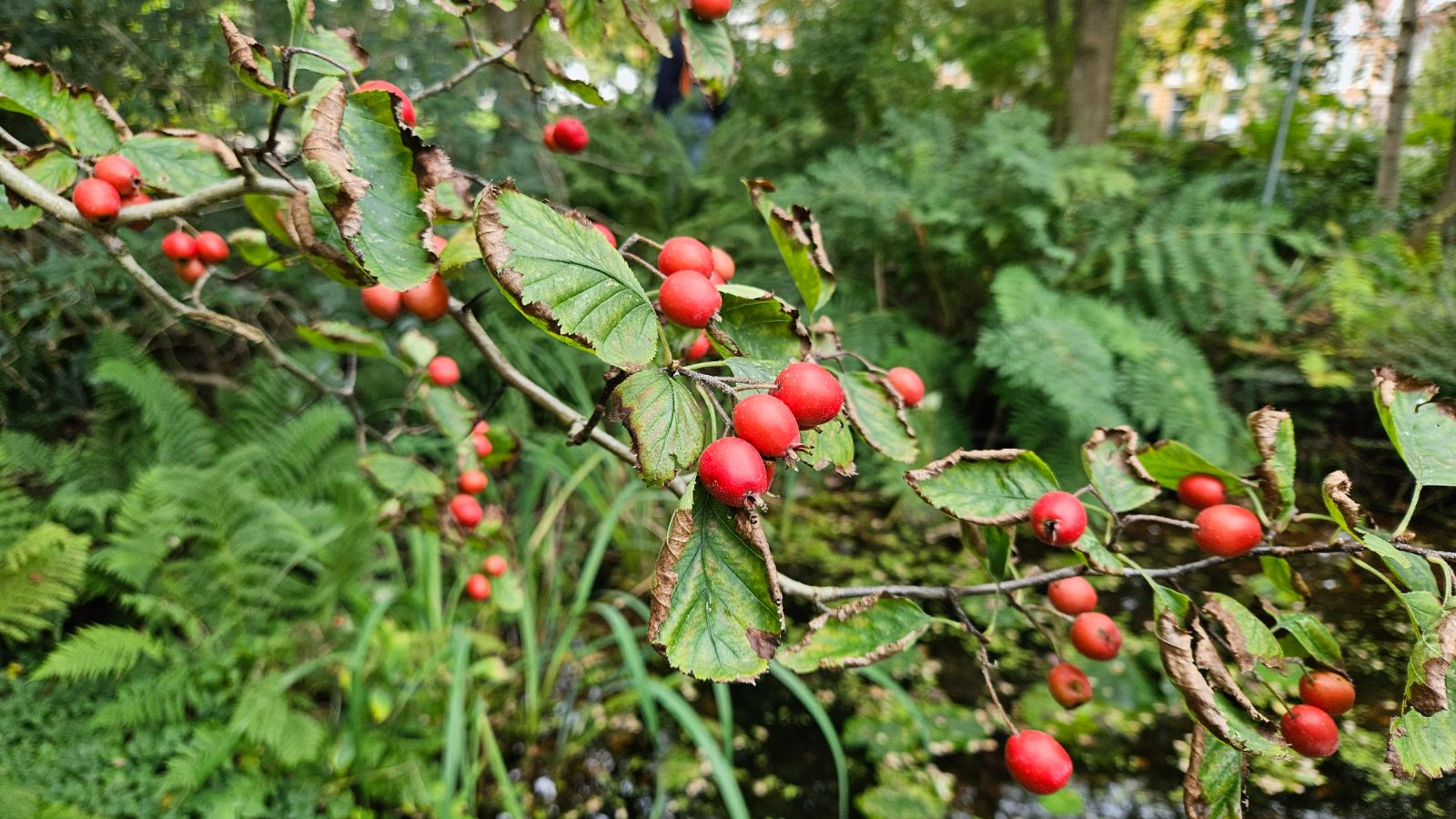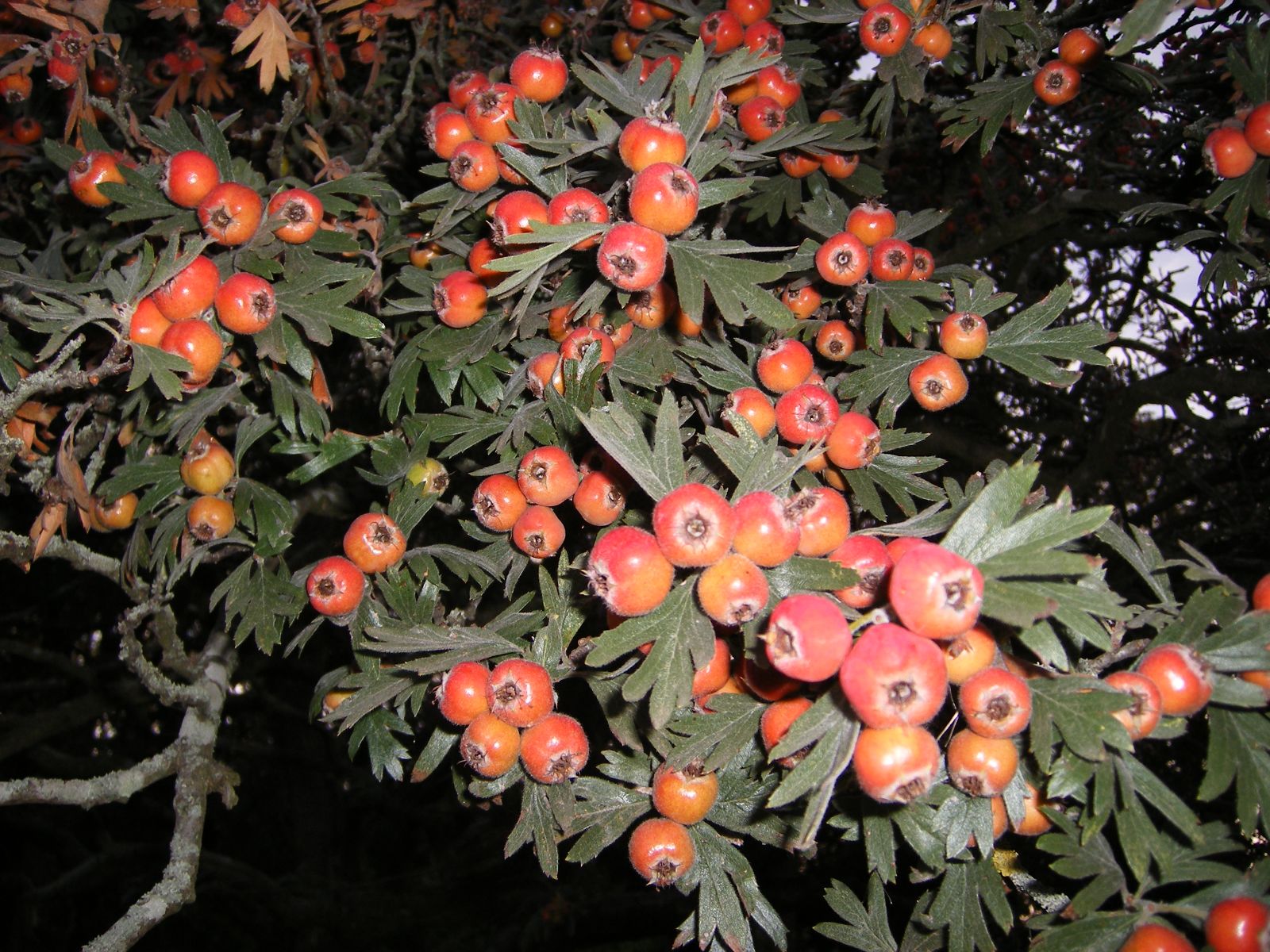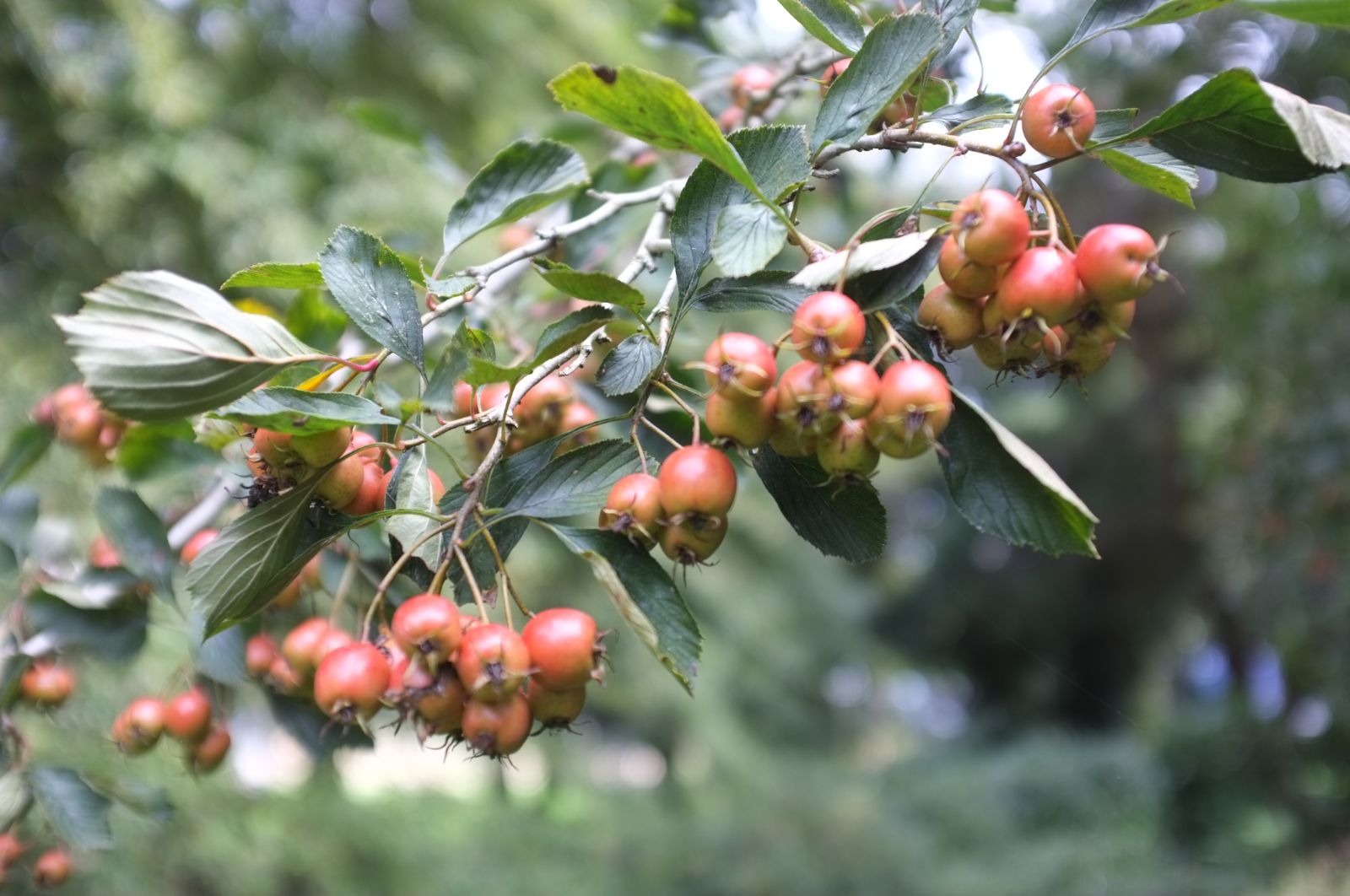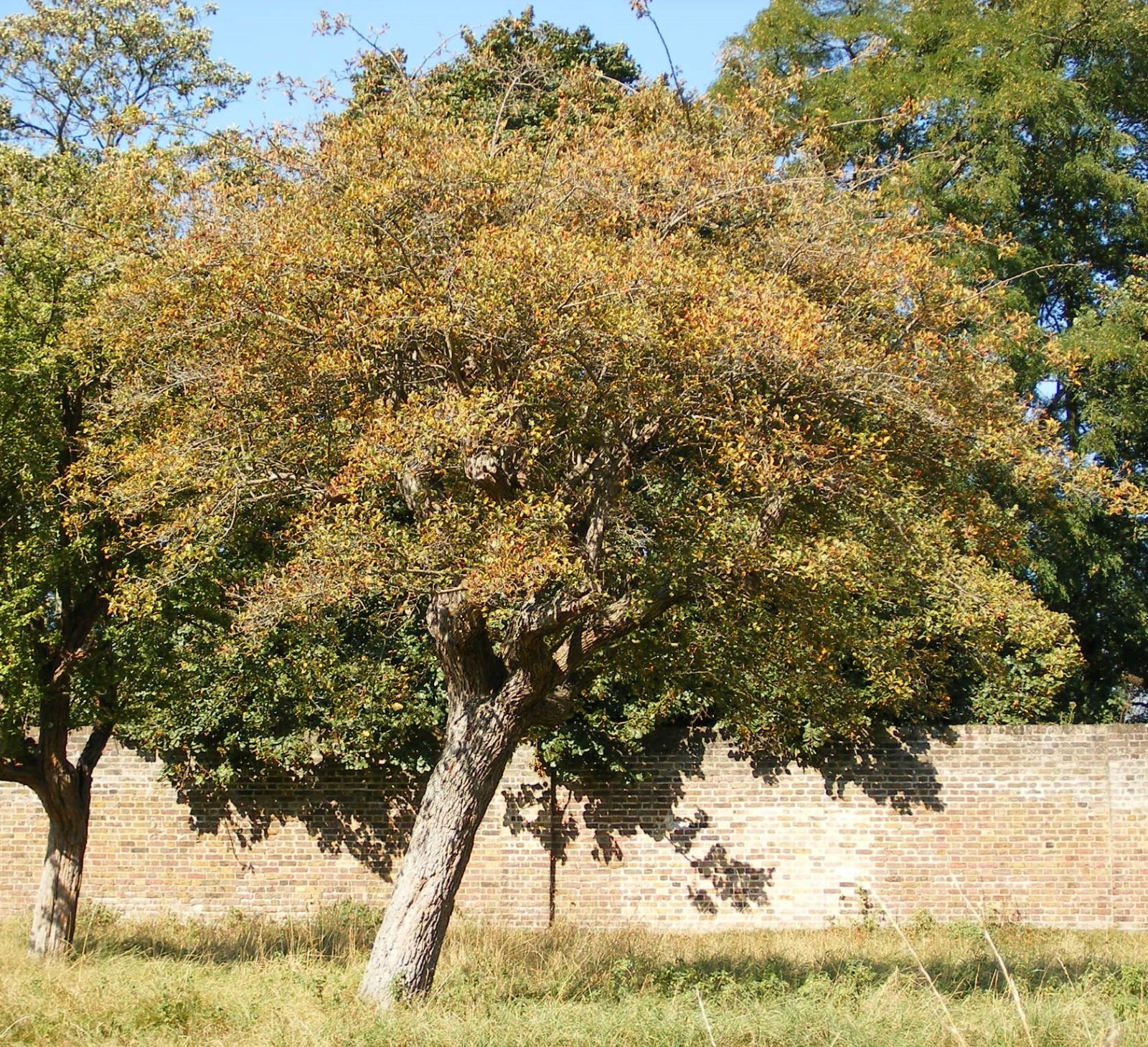Crataegus
Sponsor
Kindly sponsored by
This genus has been sponsored and new text is being prepared.
Credits
Article from Bean's Trees and Shrubs Hardy in the British Isles
Article from New Trees by John Grimshaw & Ross Bayton
Recommended citation
'Crataegus' from the website Trees and Shrubs Online (treesandshrubsonline.
Family
- Rosaceae
Common Names
- Hawthorns
Species in genus
- Crataegus ambigua
- Crataegus apiifolia
- Crataegus aprica
- Crataegus azarolus
- Crataegus baroussana
- Crataegus brachyacantha
- Crataegus chlorosarca
- Crataegus chrysocarpa
- Crataegus chungtienensis
- Crataegus coccinioides
- Crataegus crus-galli
- Crataegus cuneata
- Crataegus × dippeliana
- Crataegus douglasii
- Crataegus dsungarica
- Crataegus durobrivensis
- Crataegus flabellata
- Crataegus flava
- Crataegus henryi
- Crataegus heterophylla
- Crataegus intricata
- Crataegus jozana
- Crataegus laevigata
- Crataegus × lavallei
- Crataegus macracantha
- Crataegus marshallii
- Crataegus mexicana
- Crataegus meyeri
- Crataegus mollis
- Crataegus monogyna
- Crataegus nigra
- Crataegus oliveriana
- Crataegus orientalis
- Crataegus oxyacantha
- Crataegus pedicellata
- Crataegus pentagyna
- Crataegus phaenopyrum
- Crataegus pinnatifida
- Crataegus pruinosa
- Crataegus prunifolia
- Crataegus pseudoheterophylla
- Crataegus punctata
- Crataegus sanguinea
- Crataegus spathulata
- Crataegus stipulacea
- Crataegus succulenta
- Crataegus tanacetifolia
- Crataegus tomentosa
- Crataegus uniflora
- Crataegus viridis
- Crataegus wattiana
- Crataegus wilsonii
Editorial Note
We are delighted to have recently received sponsorship to enable the account of Crataegus to be updated. Work will start later this year and is expected to take at least 12 months to complete. Trees and Shrubs Online relies on generous donations to meet its core costs, and sponsorship to enable new text to be researched, written, edited and published. The project is indebted to the many individuals, organisations and charities that have contributed generously to our aim of disseminating new, high-quality information for free, for everyone.
The TSO team is keen to hear from anybody interested in supporting our ongoing work. We are particularly keen to secure funding to update the Japanese maples and to provide urgently-needed accounts of up-and-coming genera such as Lagerstroemia, Loropetalum and Heptapleurum (Schefflera) for which very little information is currently available to gardeners. To enquire about sponsorship opportunities please write to editor@treesandshrubsonline.org
TC, April 2024
There are about 140 species of hawthorn (Phipps et al. 2003), though Flora of China suggests that there are over 1000 (Gu et al. 2003). This huge disparity in the number of species included reflects the rather poor state of knowledge regarding the taxonomy of Crataegus. However, this ‘wild’ genus is gradually being tamed: a number of significant regional taxonomic accounts have been published (Phipps 1988, Christensen 1992, Phipps 1997, Gu et al. 2003), as has a guide to the cultivated species (Phipps et al. 2003), and a taxonomic revision of the entire genus is currently being prepared by the hawthorn expert Prof. J.B. Phipps. The genus is found throughout temperate Eurasia and North America, with some species penetrating deep into Mexico.
Hawthorns are shrubs or small trees with deciduous or rarely semi-evergreen leaves. The thorns are 1.5–9 cm long and may comprise sharp-tipped shoots with indefinite growth, simple shoots with definite growth or branched thorns, usually on the trunk; unbranched thorns are straight to recurved, fine to stout and reddish brown to black at maturity. The leaves are alternate and petiolate; they may be lobed with entire, crenate or serrate margins, or unlobed with serrate or crenate margins. Stipules are deciduous or persistent, entire to serrate. The inflorescences are terminal panicles or corymbs, though rarely umbellate or with solitary flowers. The flowers are hermaphrodite and 5-merous with a bowl-shaped hypanthium, persistent (rarely deciduous) sepals, white (rarely pink or red-tinged) petals and numerous stamens with white, yellow, pink or purple anthers. The fruit is a red, yellow, orange, purple or black pome; the flesh may be dry and mealy or succulent and juicy. There are one to five seeds in each fruit, each enclosed in its own endocarp (Phipps 1988, Christensen 1992, Phipps 1997, Gu et al. 2003).
One approaches the thicket of Crataegus with some trepidation. It is an important but usually overlooked genus, containing some excellent garden plants, though many others are very uninteresting. At the time of writing the spectacle of C. monogyna flowering in the English countryside in late spring serves to remind us what the genus can do. Their fruits are also often an important horticultural feature, and taxa such as C. ×lavallei should not be overlooked for their winter effect. Crataegus remain, however, a minority interest, with few arboreta containing a wide range, and even fewer specimens to be found in private gardens. Their thorns often make them an uncomfortable presence in the garden, and their status, intermediate between shrubs and trees, can make them difficult to place. Many species seem to start life as a tangled shrub and only slowly develop a main trunk and tree form, although they may have started flowering and fruiting at an early age.
Making the selection for inclusion in this book was not easy, as there are many synonyms to unravel, and we are grateful for the guidance provided by Prof. Phipps, principal author of the recent Hawthorns and Medlars (2003) and many scientific papers on the genus. He has pointed out (pers. comm. 2006) that the names applied to many taxa in botanical gardens are ‘wildly erroneous’ and in general thoroughly unreliable (not that this applies only to Crataegus!). Most of the species described below are rather rare in collections and even rarer in commerce, but among them are some very desirable plants worthy of much wider cultivation.
One important clarification on a point of horticultural taxonomy is that many fine cultivars such as ‘Paul’s Scarlet’ and ‘Rubra Plena’ are examples of the hybrid between C. laevigata and C. monogyna, C. ×media Bechst. (Phipps et al. 2003), rather than clones of C. laevigata as is usually stated (Bean 1976a, Krüssmann 1984, Dirr 1998, Hillier & Coombes 2002). This hybrid, usually with single white flowers, occurs frequently where its parents overlap in their wild ranges, and is intermediate in its characteristics.
In general, good garden soil is suitable for almost all hawthorns, and all tolerate lime. The majority of species are extremely hardy, but those from southern areas are less so and will require sheltered places in most parts of our area. Propagation is usually by seed, though hybridisation can be a significant problem, or by grafting onto stocks of a common species. Cuttings are difficult to root (Phipps et al. 2003). A number of pests and diseases affect hawthorns, especially in North America. Of these, the most serious are several rusts caused by Gymnosporangium fungi, that affect rosaceous plants but have an alternate host on Juniperus virginiana (for example, Gymnosporangium globosum, Cedar-hawthorn Rust), and cause severe disfigurement to the tree (Phipps et al. 2003, Chatfield et al. 1996). An annual spray with a systemic fungicide can help. Attacks by tent caterpillars can be dealt with by insecticides or by removing them manually from smaller specimens (Phipps et al. 2003).
Bean’s Trees and Shrubs
Crataegus
Hawthorn
The thorns in cultivation are deciduous trees or shrubs, nearly always more or less armed, sometimes very formidably, with spines. Some of the species from the southern United States and Mexico are inclined to be semi-evergreen. Crataegus is very sparsely represented in China, Japan, the Himalaya, and in western N. America. About a dozen species occur in Europe and Asia Minor. Most of the remainder are natives of eastern and central N. America, where an extraordinary number of beautiful species exist. A curious ignorance of the wealth of Crataegus in this area prevailed until the end of the last century. Sargent, dealing with the genus in his great Silva of North America, in 1892, described only fourteen species. Ten years later, in a supplement, the number increased to eighty-four. The number of so-called species of American thorns described and named up to the present is well over one thousand. The whole of them published up to about the year 1924 were listed and placed in their respective groups in the Journal of the Arnold Arboretum, Vol. 6, by E. J. Palmer. These groups number twenty-two. Palmer notes that the number of the stamens and the colour of their anthers furnish two of the most reliable characters for distinguishing species; the characteristics of the seeds (nutlets) and the venations of the leaves are also important.
It is scarcely credible that anything like so vast a number of genuine species exist there. A great many differ from each other scarcely more than garden varieties of apples do. At the present time, thanks to a growing understanding of the causes of the variation patterns seen in the American thorns a broader concept of the species is being adopted. Since 1925 the flow of new species from N. America has virtually dried up and many of those once recognised have been reduced to synonymy by Palmer (Brittonia, Vol. 5, pp. 471–90). In his treatment of the genus in the ‘New Britton and Brown’ (1952) the same author remarks that of the thousand and more species described from N. America ‘many are now regarded as hybrids or as varieties of variable species’. In the area covered by that work he recognises 102 species as ‘fully worthy of recognition as valid species’. A further sixty of more doubtful standing are also included.
It is evident that no work dealing with hardy trees and shrubs in general can, within ordinary and convenient limits, deal with more than a very small proportion of them. Even Dr Rehder of the Arnold Arboretum, Mass. (where are cultivated some six hundred “species” of Crataegus), has, in his comprehensive book on trees and shrubs cultivated in cool temperate N. America, given detailed consideration to less than thirty N. American species. There are in cultivation at Kew about 150 N. American species, but a monotonous proportion of them are what we should, in the old days, have lumped under C. coccinea or mollis. Certainly they have brought no increase of beauty into the genus anything like commensurate with their number. The genus can still quite adequately be represented in any garden by a selection from the species and varieties dealt with in these pages. Nor would it be justifiable to devote main entries to every one of the species included. Those of minor importance are given short treatment under some more important species in the same series or related series. These can be located by using the index in the present volume.
Leaves alternate, always toothed or lobed, often both; those of the vigorous non-flowering shoots of the year being usually much larger and broader at the base than those of the flowering shoots. They have also, as a rule, much larger and more persistent stipules. The stipules of Crataegus, however, vary so much, even on the same plant, that they do not afford very good differentiating characters. Flowers 1⁄3 to 3⁄4 in. in diameter; nearly always white, sometimes yellowish white, sometimes red in garden varieties; produced mostly in May and June, in flattish or rounded corymbs at the end of short, leafy shoots, which spring from the buds of the previous year’s growths. In rare instances the flowers are solitary. Petals and calyx-lobes five; stamens five to twenty-five; styles one to five. Fruit a pome, consisting of a fleshy exterior, enclosing as many bony nutlets as there are styles. The fruits are of various colours, mostly red, but also black, yellow, and blue.
The nearest ally to Crataegus is Cotoneaster, which has, however, entire leaves and no thorns. Mespilus is also allied, but has large, solitary, scarcely stalked flowers, with long leaf-like lobes to the calyx. Pyracantha, included in Crataegus in many nineteenth-century works, differs in the evergreen leaves and in having consistently a five-styled flower and a fruit with always five nutlets.
The cultivation of the thorns presents no problems. They all like a loamy soil, and have no objection to lime. They are best raised from seeds, and trees so derived are better-growing and longer-lived than grafted ones. This applies especially to grafted trees of which stock and scion are of different species. It has long been the practice to graft the American thorns on C. monogyna, but although it is a longer business raising them from seed, it pays in the end. Named and selected forms have, perforce, to be increased by grafting; in that case stocks of the parent species should be selected.
As is the case with many temperate woody species, the seeds of the thorns require a period of after-ripening under cold and moist conditions before germination can take place; the optimum temperature is around 41°F. Species with hard seed-coats also need a period of warmth during which the bony outer-covering is softened by the attacks of soil organisms; this warm period must precede the cold one, since the after-ripening cannot begin until the seeds have been rendered permeable and the embryos have taken up water. The private grower is best advised to sow the seed in containers as early in the winter as possible; if germination does not take place in the following spring, it should do so a year later, though some species with very hard seed-coats may not germinate until the third year. If the species to be raised is known to be one which requires a preliminary warm period, sowing is best delayed until the late spring or early summer, since wintering will be ineffective in such cases until the seed-coats have softened. For the commercial grower who raises large numbers of plants in open-ground seed-beds it is clearly uneconomic to sow the seed until it is ready to germinate; it is therefore stratified in moist sand or peat for six or eighteen months, according to the species; the longer period is needed for the common hawthorn and many exotic species. Seed is extracted from the fruits by rotting or by macerating in water. For further information see Contributions from the Boyce Thompson Institute, Vol. 9, pp. 409–23, 1938, summarised in Barton and Crocker, Twenty Years of Seed Research, 1948, Chapters 6 and 8.
For the disease Fireblight, see the introductory note to Cotoneaster.
The thorns do not transplant well if allowed to remain more than two or three years in a place. They like a good, well-drained soil, and the only pruning they need is the removal of overcrowding branches, and an encouragement of the leading shoot when young by removing rivals.
The thorns have two, frequently three, seasons of beauty – in flower, in fruit, and in the dying foliage. Few genera, indeed, supply so many charming lawn trees. Besides the garden forms of oxyacantha and monogyna, the following eleven thorns may be selected as specially worthy: crus-galli, × lavallei, macracantha, mollis, phaenopyrum, pinnatida var. major, prunifolia, punctata, tanacetifolia, and tomentosa (calpodendron).

